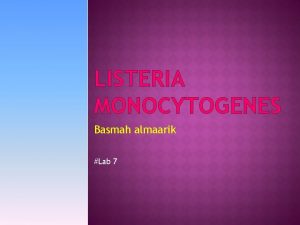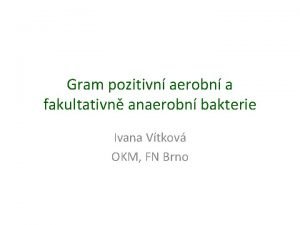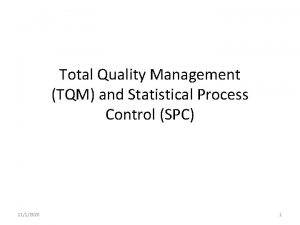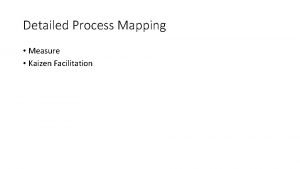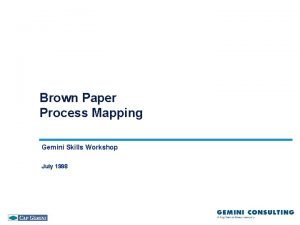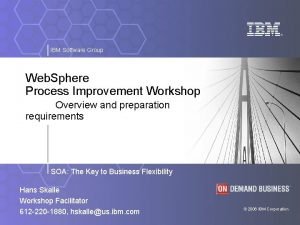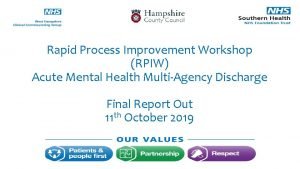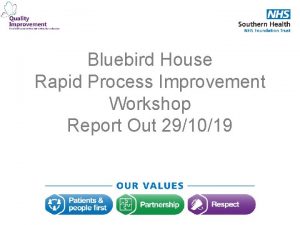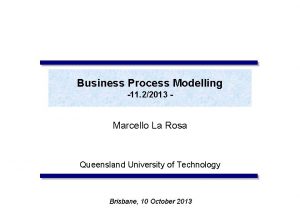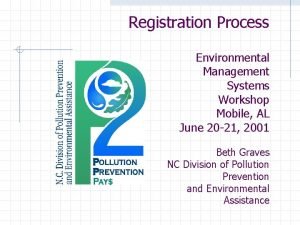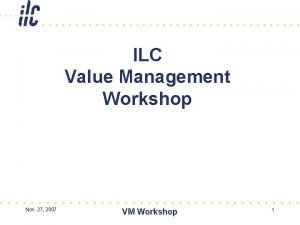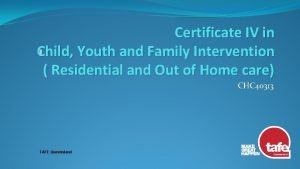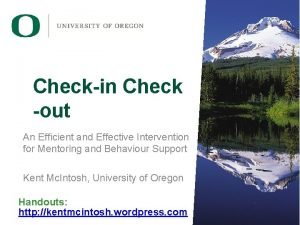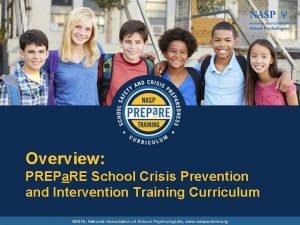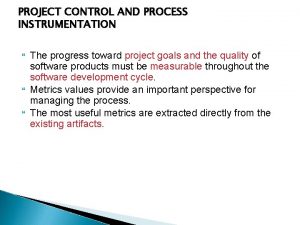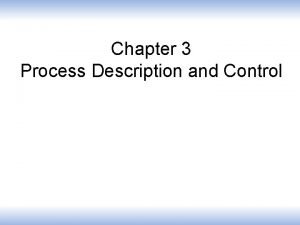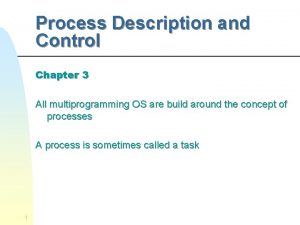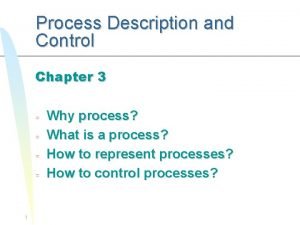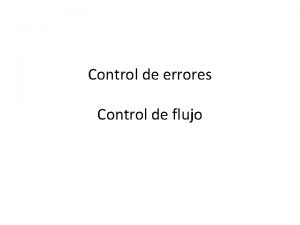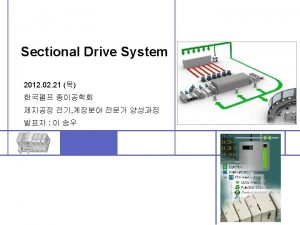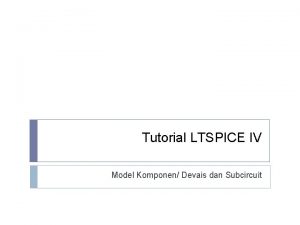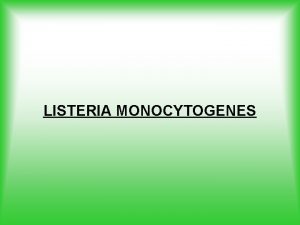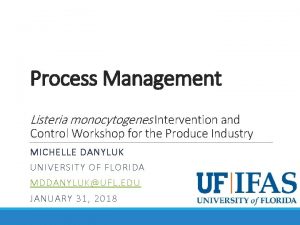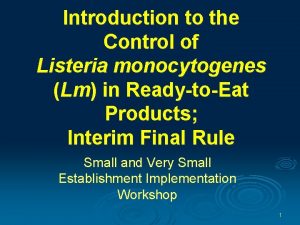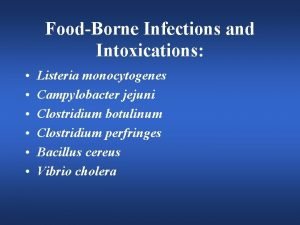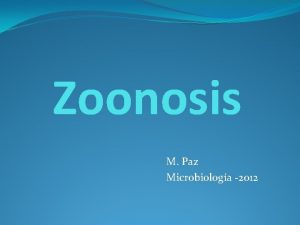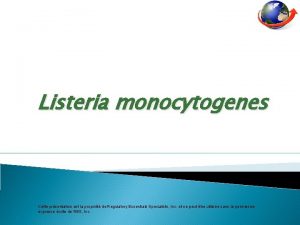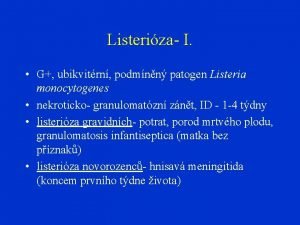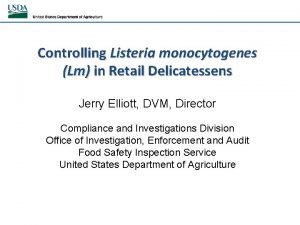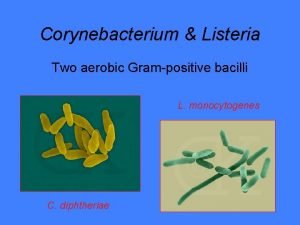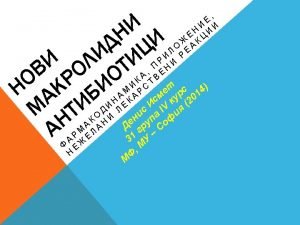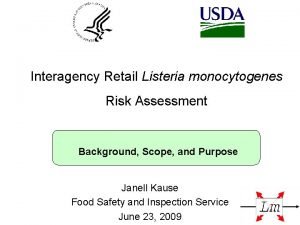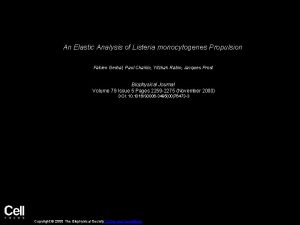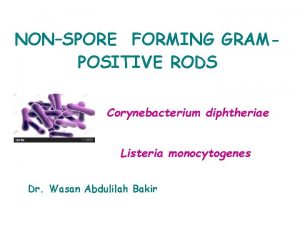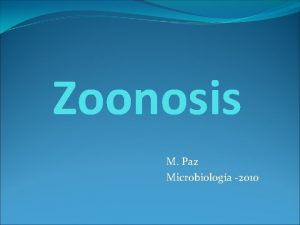Process Management Listeria monocytogenes Intervention and Control Workshop










































- Slides: 42

Process Management Listeria monocytogenes Intervention and Control Workshop for the Produce Industry MICHELLE DANYLUK UNIVERSITY OF FLORIDA MDDANYLUK@UFL. EDU JANUARY 31, 2018

Acknowledgements Thank you to Dr. Trevor Suslow (UC Davis) and Dr. Laura Strawn (Virginia Tech) for sharing their slide sets from the first two workshops!

Outline Understanding Listeria and its importance Identifying Listeria Sources and Risks Controlling/minimizing Listeria in Packinghouses Training, Sanitation and Environmental Monitoring Programs (critical keys) Breakout Activity – Name the corrective action(s)?

Understanding Listeria… and its importance Soil-borne, common in the outside environment ◦ Can multiply over range of temperatures ◦ Can adapt to variety of stresses ◦ Can persist for long periods in environments Chances are high Listeria may enter your facility at some point, so it is vital for growers/packers to assess their operation’s vulnerability to Listeria, and manage risk(s) ◦ Cleaning and sanitization programs ◦ Environmental monitoring programs

Transient vs. Resident

Listeria Common Harborage Sites and Niches Sources/Niches/Harborage Sites ◦ ◦ ◦ Equipment seams Drains (lines, grates, etc. ) Wheels of forklifts, tractors, and wagons Condensate drip pans Filters Gear boxes Floors Conveyor belts and rollers Gaskets Cleaning tools and utensils (mops, squeegees, brushes, hoses) ETC…

Zone Concept for Process Management Controls Zones generally refer to food contact surfaces and non-food contact surfaces ◦ 1: Product contact surfaces ◦ 2: Non-product contact surfaces (near) ◦ 3: Other areas within finished product room ◦ 4: Areas outside of finished product room Allows facility to group risk and prioritize your food safety (for example, your sanitation program)

Zones in the Packinghouse Help prioritize cleaning and sanitation efforts by designating areas or ‘zones’ within the packing area.

Zone 1: Direct Food Contact Surfaces • Biggest concern because if contaminated, could result in cross-contamination of the produce • Includes harvest/storage bins, workers’ hands, conveyors, belts, brushes, rollers, sorting tables, racks, and utensils • Initial efforts should be focused on Zone 1 since it has the most immediate impact on safety

The Other Zones: 2, 3, & 4 • These areas are important because they may contribute to contamination of Zone 1 • These areas are best managed by established cleaning schedules to make sure areas adjacent to or outside of Zone 1 do not introduce contamination

Zone Examples

Zone Concept for Process Management Controls Considerations for frequency of cleaning and sanitizing (when possible) Likelihood of harborage Likelihood of cross-contamination Frequency and depth of EMP GMP process control areas may include all four zones in a close space

Define your control perimeter. The cost of control increases as you move toward your intensive high-care areas.

Facility Design and Process Management of GMPs is Variable

Packing Facilities – A Diverse Spectrum Many challenges in open to enclosed environments ◦ Pole-barn with roof, but no side walls May be be within cropping area Not generally built with cleaning or sanitation in mind Materials that are hard to clean Perimeter and internal pest control ◦ Insects, birds, rodent vectors Remote from sanitation services ◦ Packing staff also cleaning and sanitizing crew

Area Concept for Setting Clean and Sanitize Priorities & Environmental Monitoring Programs “High-care” areas may not be internal with RAC ◦ Dump and transport ◦ Precooling operations ◦ Pre-grade and sort ◦ Pre-pack conditioning and storage ◦ Packing ◦ Pre-shipping cooling *Traffic patterns

Listeria Process Management Challenges Expect Listeria to be present sporadically and potentially transferred Contamination is likely to be low, but our knowledge is limited Difficult to exclude potential harborage sites

Areas 1, 2, and 3 may be in Close Proximity

So, What Can We Do…

Controlling Listeria Before the Packinghouse Minimizing contamination in the field ◦ GAPs, training workers, minimize dirt on containers, etc. Keeping grounds tidy outside the facility ◦ Mow lawns, no litter, etc.

Controlling Listeria Know your Facility Product Flow ◦ Where areas with excess moisture, or standing water? ◦ What are contact surfaces? Pest issues Dry or wet operation Drains & Floors ◦ Design, function, management, sloped, etc.

Controlling Listeria Know your Facility Vehicle and employee traffic patterns ◦ Signage, footbaths, barriers, etc. Employee practices Equipment design ◦ Old/new, can it be easily cleaned/sanitized, etc. What needs repair or replacement Air flow

Key Focus: Facility Design Basic Elements Solid, cleanable floors, sloped toward drains Drains preferable located away from walls Sanitary joint between floors and walls Cooler condensate does not drain to floor ◦ Does not drain onto product or contact surfaces Prevent harborage area on door thresholds Cracked and broken epoxy floor coatings Degraded concrete with areas of exposed aggregate

Integrate All Aspects of Facility Design to Facilitate Sanitation Create an environment that is easy to maintain in the required sanitary condition ◦ Specify materials that are easy to clean ◦ Design for the expected life span of the facility ◦ Especially flooring Start planning for sanitation at the property line ◦ Often necessary to look to adjacent activities

Key Focus: Product Flow

Key Focus: Product Flow Limit traffic of workers or equipment/tools from field into packinghouse; or cleaning/sanitizing ◦ May be challenging (e. g. , fork lifts, bins, management staff) Reduce opportunities for cross contamination

Key Focus: Items that Move About

Key Focus: Prevent Condensation from Direct and Indirect Contact with FCS Don’t forget condensation on cold-curtains and run -off from adjacent bin dumps!

Key Focus: All Things Hollow are a Risk

Key Focus: Pre-coolers and Cold Storage Rooms Not always built with cleaning/sanitation in mind Spray on insulation common Frequently full of produce Cold, wet environment - Listeria friendly Pest Control – insects, birds, rodents (vectors) Storage bins and fork lifts bring contamination in to the environment Cooling coils hard to clean Air handling system is very effective at moving contamination around facilities

Key Focus: Damaged Walls in Pre-Cooler and Cold Room From folk lifts or water-saturated Niche for pests

Key Focus: Employee Practices When you aren’t looking? ◦ Things happen (movement in facilities) Best practices ◦ Areas for breaks, areas to leave PPE, trainings GLOVES TOUCHING FLOOR

Corrective Action Plan for Additional Potential Risks Replace conveyance contact points of concern ◦ Injury ◦ Entrapment of debris ◦ Cracked belts ◦ Frayed and exposed edges ◦ “Clean-ability” ◦ Points of entrapments in rollers ◦ Reduce number of brush beds to essential for quality

Retrofit Dump and Flume & Grade and Sort Equipment Fix rough welds Fix all transition and entrapment points

Dead-legs in Dump and Wash Systems Accumulate Sediments and Biofilms

Goal to Minimizing Listeria Risk Process Management Invest in Employee Training Sanitation, Sanitation! ◦ Measureable and verifiable sanitation programs Start an Environmental Monitoring Program ◦ Drives Corrective actions

Biggest ROI – Training Incoming product Bigger cleaning crews ◦ Motivated crew leader (not just a job) ◦ Management buy in Environment Longer time to clean + master schedule Advanced training People Rewards systems Increased pay rates

Sanitation Programs Participate in hands-on trainings and group demonstrations Rotate sanitizers Adapt program based on monitoring results

Environmental Monitoring Programs… Identify Listeria vulnerabilities in facility Establish corrective actions for positive samples in advance Internal subtyping programs to source-track What if I never find anything?

Environmental Monitoring Programs… Where to sample, which sites? ◦ Divided by zones ◦ Focus on niches/harborage sites ◦ Fixed end sampling sites (e. g. , where product builds up, end of line, close to packaging) How often, frequency ◦ Weekly, monthly, quarterly, etc. When to sample? ◦ Depends on goal, outcome ◦ Mid-shift, post-operation, after sanitation

Activity Each group is given: ◦ Photo of something(s) requiring a corrective action Develop a corrective action ◦ Short term corrective action ◦ Ex – re-clean and sanitize ◦ Long term corrective action ◦ Ex – Root cause analysis of cause/source

Questions? MICHELLE DANYLUK MDDANYLUK@UFL. EDU
 Listeria catalase
Listeria catalase Bacillus anthracis caput medusae
Bacillus anthracis caput medusae Process control and product control
Process control and product control Change management intervention
Change management intervention Airline ticket
Airline ticket Kaizen process mapping
Kaizen process mapping Brown paper mapping technique
Brown paper mapping technique Ibm process improvement
Ibm process improvement Process improvement workshop agenda
Process improvement workshop agenda Rapid process improvement workshop
Rapid process improvement workshop Process hierarchy in process management
Process hierarchy in process management 6-5 study guide and intervention rhombi and squares
6-5 study guide and intervention rhombi and squares Eep mobile al
Eep mobile al Value management workshop agenda
Value management workshop agenda Lac operon positive control
Lac operon positive control Flow control and error control
Flow control and error control National health programme for children in india
National health programme for children in india Early warning intervention and monitoring system
Early warning intervention and monitoring system Rpl tafe qld
Rpl tafe qld Taxation and government intervention
Taxation and government intervention Check-in/check-out intervention template
Check-in/check-out intervention template School crisis prevention and intervention
School crisis prevention and intervention Petition vs intercession
Petition vs intercession Lesson 11-1 areas of parallelograms and triangles answers
Lesson 11-1 areas of parallelograms and triangles answers Purpose and philosophy of nonviolent crisis intervention
Purpose and philosophy of nonviolent crisis intervention Process instrumentation in project management
Process instrumentation in project management Process design and control design should always be in
Process design and control design should always be in Process description and control
Process description and control Process description and control
Process description and control Program vs process
Program vs process Top management and middle management
Top management and middle management Top management middle management first line management
Top management middle management first line management Middle level management
Middle level management Translational research institute on pain in later life
Translational research institute on pain in later life Reynold’s transport theorem
Reynold’s transport theorem Stock control e flow control
Stock control e flow control Control volume vs control surface
Control volume vs control surface What is variable in research
What is variable in research Jelaskan tentang error control pada data link control?
Jelaskan tentang error control pada data link control? Control de errores
Control de errores Negative control vs positive control examples
Negative control vs positive control examples Scalar control vs vector control
Scalar control vs vector control Komponen pada ltspice
Komponen pada ltspice
